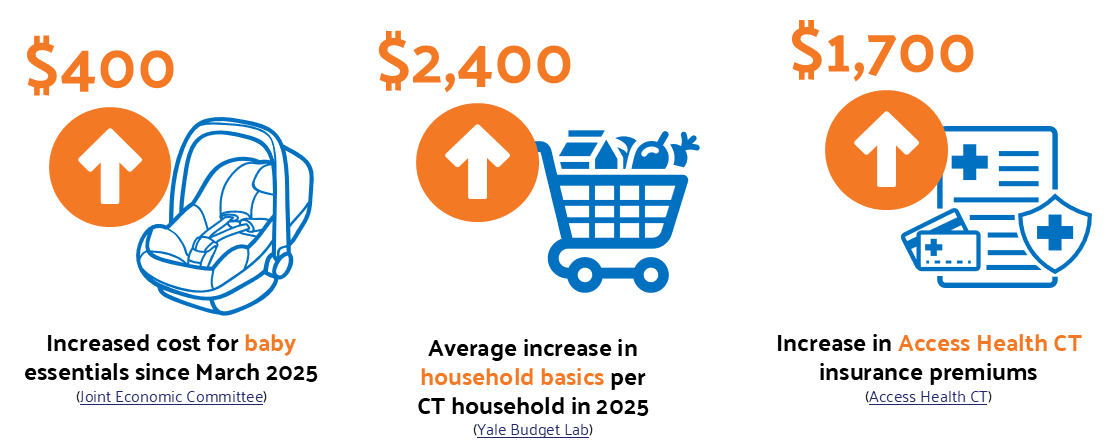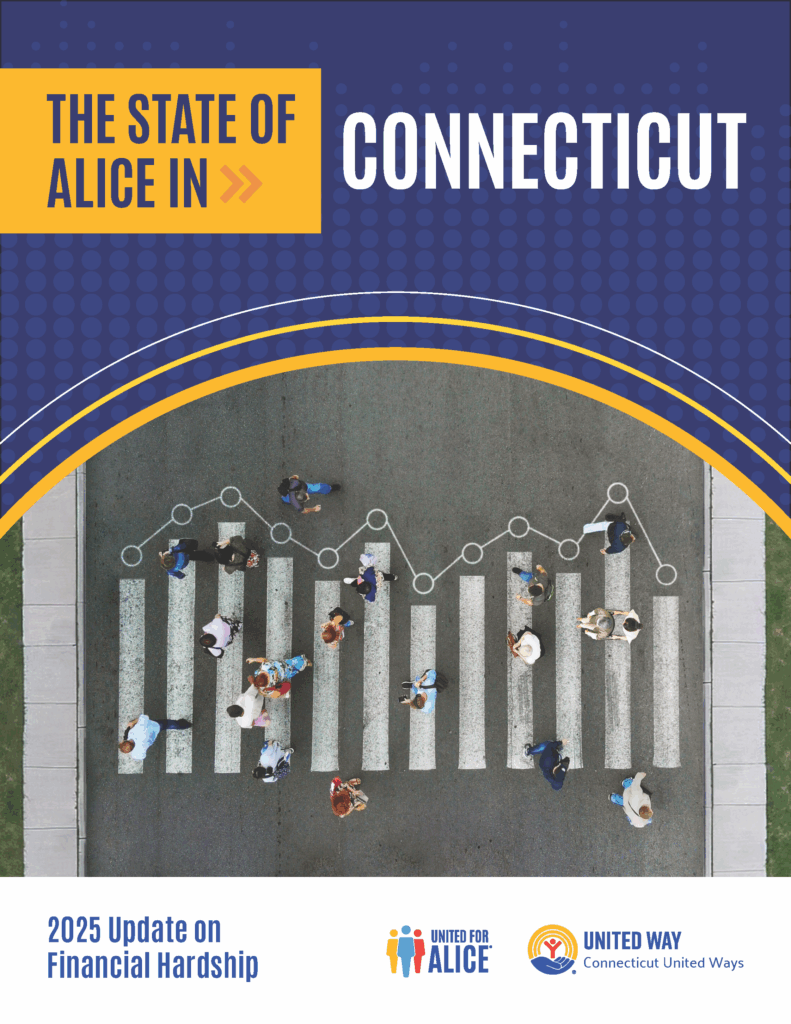
2025 Update on Financial Hardship
ALICE® is an acronym for Asset Limited, Income Constrained, Employed — households that earn more than the Federal Poverty Level, but less than the basic cost of living for the county.

Households below the ALICE Threshold — ALICE households plus those in poverty — can’t afford the basics in the communities where they live. The new report shows that 40% of households in the state of Connecticut are below the ALICE Threshold.
We lean on ALICE for support: yet many ALICE households are one emergency away from a financial crisis, impacting their ability to feed their families, heat their homes, maintaining their housing, and ensure the medical care.
Key Findings in the Report:
- Financial hardship of Connecticut households continues to grow, as much as a 6% increase
- The problem: a mismatch between wages and the costs of basics. Family of four needs $103,500 to afford the basics
- Gender and racial disparities persist. 23% more single-mothers vs single-fathers are below the ALICE Threshold
Some of the factors include:

Read more about ALICE Report for households in Southeastern Connecticut >>
Click here to read the statewide ALICE Report >>
About ALICE
ALICE is a national, data-driven research initiative that reveals a hidden crisis in our communities. Traditional poverty measures don’t capture the full extent of financial hardship in our communities. Connecticut United Ways are committed to shedding light on this issue and unlocking solutions to ensure that everyone has the opportunity to thrive.
Connecticut has experienced many ups and downs over the last few years. But one alarming trend remains steady: the growing number of ALICE families in every corner of our state.
ALICE is us, our friends, neighbors, coworkers and family members. We lean on ALICE for support, yet many ALICE households are one emergency away from a financial crisis impacting their ability to feed their families, heat their homes, maintain their houses and ensure their medical care. For a growing number of U.S. households, financial stability is nothing more than a pipe dream, no matter how hard their members work.

